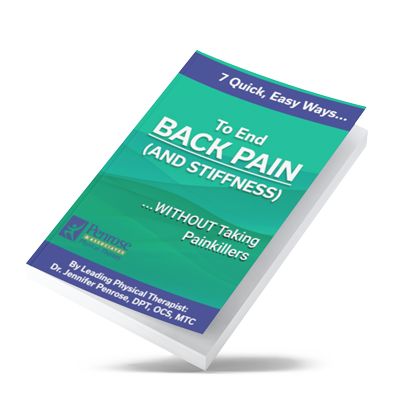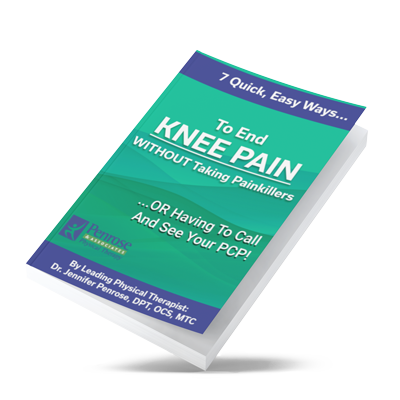LACEY (WA) – Knee pain is becoming one of the most common complaints we hear at Penrose Physical Therapy, and it’s one of the most frequent areas we treat. But before we dive into why this happens, let’s see if any of this sounds familiar:
Do you experience occasional clicking in your knees? At first, it’s harmless, just a few clicks here and there. You think nothing of it. But as time passes, those clicks start to come with some discomfort, especially under your kneecap or on the inside of your knee. Walking through the store for a while leaves you with sore knees, and after sitting down to watch your favorite TV show, it takes a few steps to “get going” again. And don’t even get me started on how much worse it feels when it’s cold.
Sound familiar? You’re not alone. So, why does this happen, and why are more people experiencing it now than ever before?
Here’s the issue: More people are becoming victims of poor footwear choices. Shoes like “flats” and pump-style shoes are some of the biggest culprits. These types of shoes provide zero support for your feet. Over time, the ligaments around your foot and ankle become loose, and every time you put weight on your feet, they shift out of their proper position. This misalignment doesn’t just affect your feet—it affects your entire body.
When your feet roll in (something you might recognize as “pronation” if you’re a runner), they pull and twist your lower legs. This, in turn, twists your knees. Early on, you may only notice a few clicks, but as the misalignment worsens, the pain sets in, and damage starts to occur.
Think of the “clicky” knees as a warning sign—it’s your body telling you something is wrong. The good news is, you can do something about it!
Simple Self-Checks to Assess Your Knees and Feet:
Here’s a simple guide you can use at home to check your knees and feet. All you need is a mirror!
- Check Knee Alignment: Stand in front of the mirror and take a look at your knees. Are they pointing straight ahead? They should not be facing toward each other (knock knees) or away from each other (bow-legged).
- Small Squat Test: Bend your knees into a small squat, as if you were sitting down in a chair behind you. Do you hear any clicking? While squatting, check if your knees are in line with your second toes. If not, there could be a misalignment that needs addressing.
- Arch of the Foot: Stand up tall again. Look at your feet—do you see an arch along the inside? There should be one, and if not, it may be a sign of poor foot support.
- Balance Check: Try standing on one leg. Is it easy to balance, or do you feel like your foot and ankle are rolling inward? If they are, it could mean your foot ligaments have lost support.
- Ankle Pain Check: If you experience pain on the inside of your ankle, try standing on one foot and lifting onto your toes. If this causes pain or feels difficult, it’s time to see a physical therapist before permanent damage is done.
- Footprint Test: When stepping out of the shower, look at your wet footprints on the floor. They should resemble a “C” shape. If they don’t, it could indicate a misalignment.
This is just a basic guide to help you check your feet and knees at home. But if you have any concerns about your knees, it’s always best to have them assessed by a specialist, like a physical therapist. If the problem originates with your feet, don’t worry—we have solutions that protect your knees while allowing you to wear your favorite shoes safely.
The author, Jennifer Penrose, is a physical therapist and owner of Penrose Physical Therapy. If you have any questions about knee pain, feel free to contact us at: (360) 456-1444 or email jennifer@penrosept.com.
P.S.
Want more health tips? Tune in to Dr. Penrose’s monthly podcast, Stay Healthy South Sound, available on iTunes, Google Play, or Spotify!






